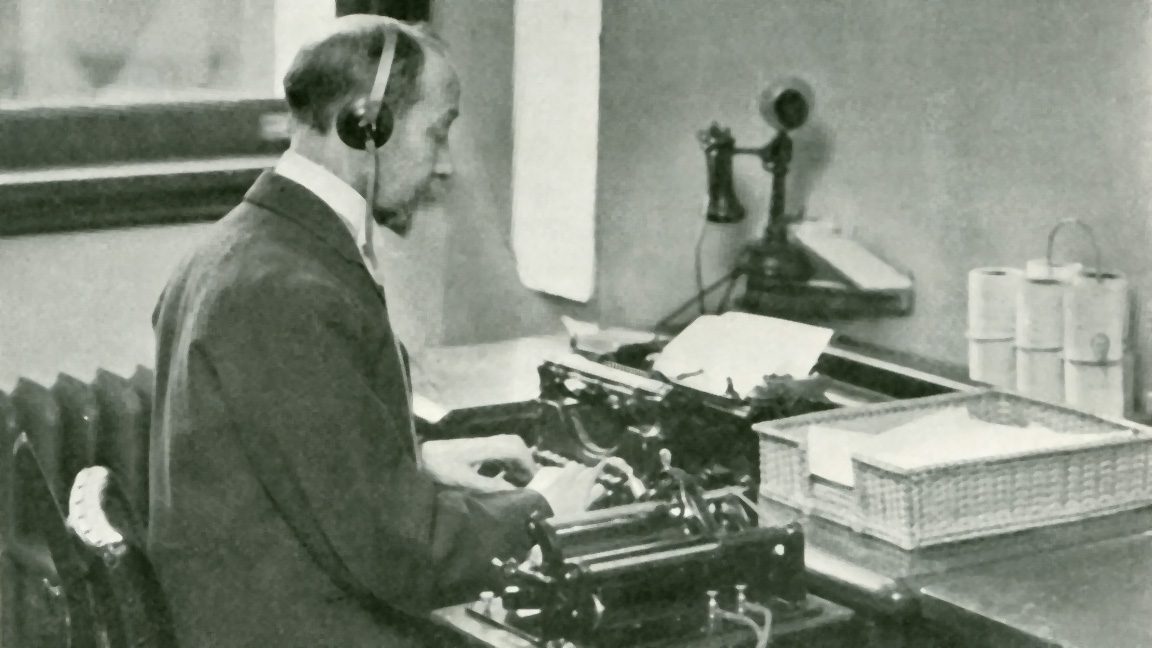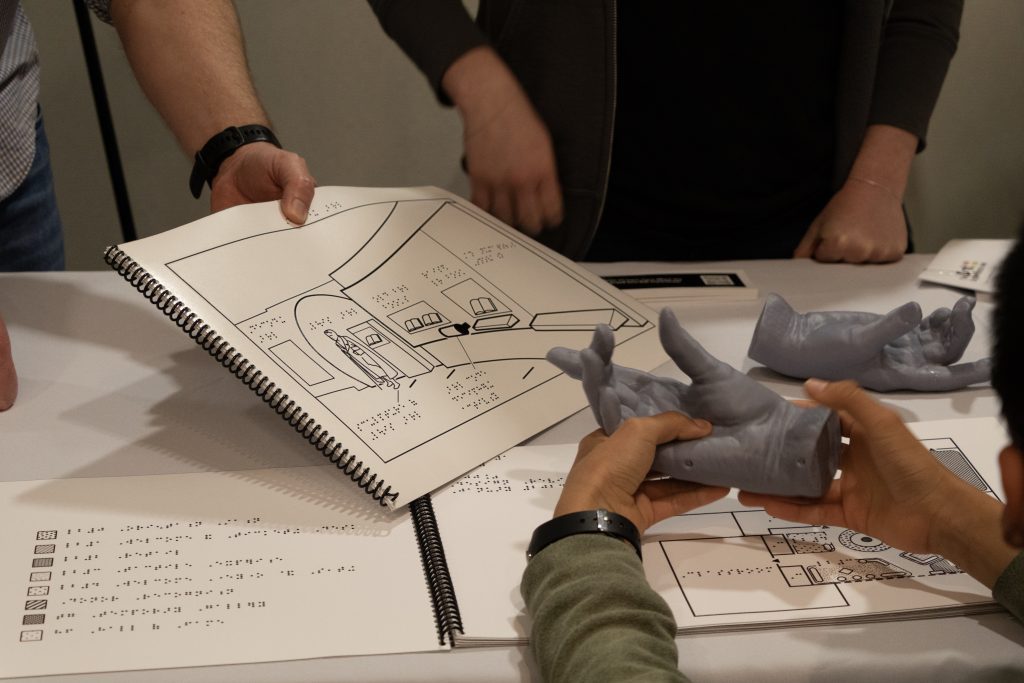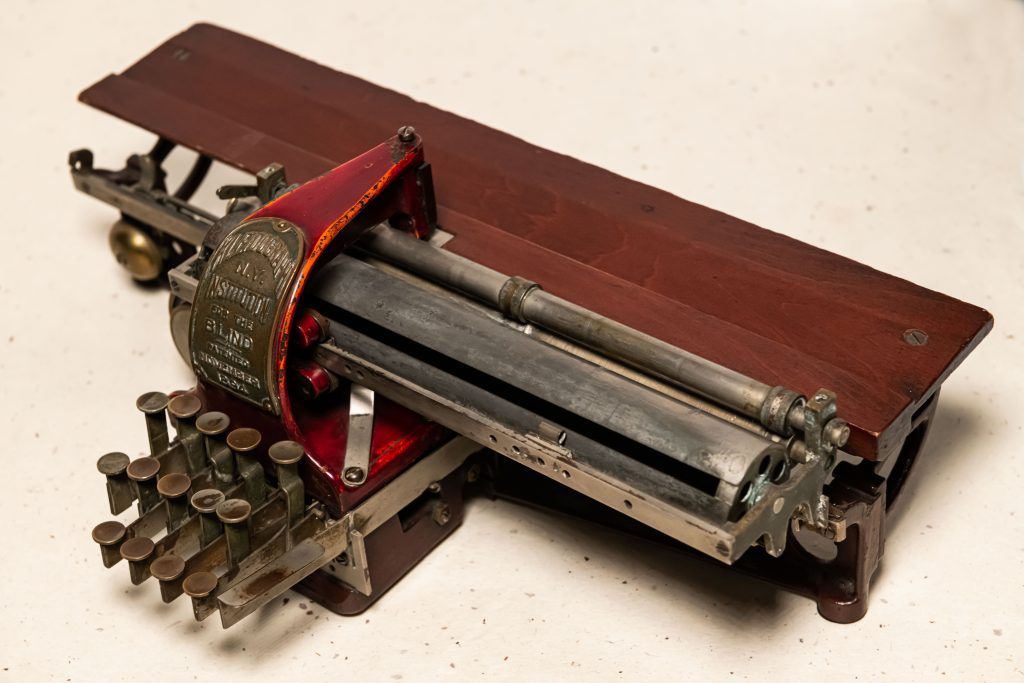The More Things Change

Images of light and darkness are typical components of lots of historical writing about blindness. In our museum collection is a booklet published by the New York Association for the Blind in April 1911 titled “Handbook for the Blind Worker’s Exhibition.” The cover has a seal created for the exhibition featuring a lighthouse in a stormy sea and the slogan “Light Through Work.” The booklet’s foreword begins “The Blind Worker’s Exhibition is designed to be a record of unusual courage—the courage of those who refuse to allow loss of sight to make them objects of charity.”
My friends who are blind would scoff at such a choice of words. It probably took no more “courage” in 1911 to go out and get a job than it does today, maybe just an empty stomach or a stack of unpaid bills! But in 1911, if you wanted to motivate broader society, you spoke about blindness that way, using light and darkness as metaphors and describing disability as something overcome only through outstanding effort. If we were honest, most people still think of disability that way if they don’t live and work with people living and working with disabilities.
I thought it might be interesting to browse through the exhibition and see what people who were blind and people who were serving people who were blind were working on in 1911. What the exhibition was aiming at was not too far off from what we are thinking about as we prepare for the Dot Experience to open in 2025.
If you haven’t heard yet, our museum and factory tour experience at APH will close on June 3. As part of a massive remodeling project that will bring APH infrastructure into the 21st century and better prepare all of our operations to face new challenges and new opportunities, we are reimagining the way we tell our story. The new facility, located at the front of our plant on Frankfort Avenue in Louisville, will be called the Dot Experience at APH.
The organizers of the Blind Worker’s Exhibition wanted to show the public what people who were blind were doing and shake up old stereotypes of what was possible. As the foreword reads, “the blind have the same emotions, gain the same joy through independence, and need society and recreation quite as much as those who have all their faculties.” We would say it differently today, but a major section of the Dot Experience at APH is going to be exploring just that. We are talking to folks all over the country, locating a cast of characters, a cast of real people who are your neighbors and who live and work in your community. The “cast” of the Dot Experience will welcome you to APH and welcome you into their lives.
The 1911 Blind Worker’s Exhibition hoped that the general public “will realize that the blind are part of themselves and so extend to them the same opportunities to work and to sell their products, and the same fellowship that prevail among the seeing.” Again, we might say it differently, but our goals at APH are not too far off. We hope the Dot Experience will demystify blindness, introducing people with disabilities as fellow travelers with the same goals, needs, desires, hopes, dreams, disappointments, and, yes, human frailties as everyone else. In 1911, the sight of a fellow clacking away on a manual typewriter, transcribing from a document recorded on an Edison Phonograph, must have been quite a marvel. Our hope when you finish our new exhibit is that people see that it was no big thing.
Mike Hudson is the Director of the Museum of the American Printing House for the Blind.
Share this article.
Related articles

Defining The Dot Experience: Everything You Need to Know
What is The Dot Experience? The Dot Experience is APH’s re-imagined museum set to open in 2026. Designed with an...

Blindness History Basics: History of Braille Writers
When fifteen-year-old Louis Braille presented his tactile system of raised dots in 1824, he hoped the new system would provide a...

Please Touch! Making Museum Collections Accessible
What do you think of when you hear the words “museum collection?” Artifacts like objects, paintings, photographs, rare books, or...
